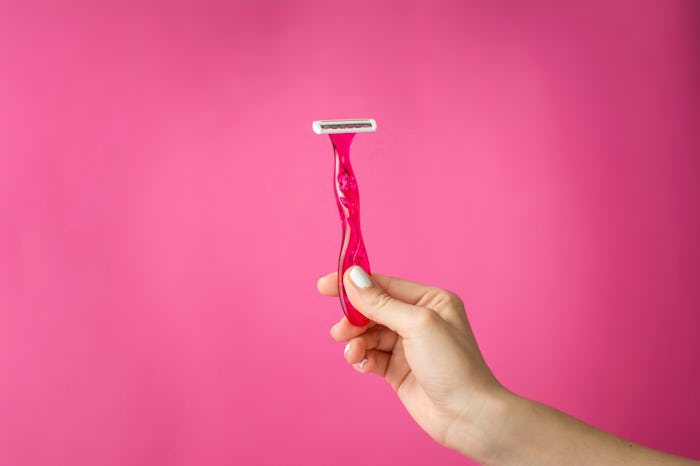Life
6 Surprising Things OB-GYNs Wish You Knew Before Shaving Down There
Shaving can be intimidating the first time you try it out, regardless of the area you're shaving or how old you are. But when you're shaving an especially sensitive area, like your pubic area, you might be especially nervous initially, or, at least, keenly aware of how quickly something could go awry. And though you might think that shaving this oh-so-delicate part of your body is the same as shaving any other part, that's not exactly the case. There are some surprising things OB-GYNs wish you knew before shaving down there that are important to know — and worthwhile to consider — even if you've been shaving for years.
Although many people do choose to groom their pubic hair, you might not actually know the ins and outs of what to do and what to avoid, beyond the standards like making sure the razor isn't too dull and not shaving skin that's dry. But some of the things that OB-GYNs wish you knew aren't quite as intuitive and they might not be things that you've ever heard before. From what to do about shaving cream to how much shaving to actually do, there might be more to the process of shaving and grooming pubic hair than you previously thought.
1Your Regular Shaving Cream Might Irritate Your Skin
If you shave your legs, armpits, or anywhere else and typically use shaving cream, you might think that whatever you're already using is fair-game when it comes to shaving down there, but that might not actually be the kind of cream you want to use.
"[T]he shaving cream that you use on your legs can sometimes be irritating to your vulva and so you have to test a small section of your vulva first, I usually recommend, to make sure you’re not going to get irritation from the shaving cream," Dr. Hilda Hutcherson, MD, an OB-GYN with Columbia University, tells Romper.
Patch-testing will help you know if your skin might react poorly to the cream without making the entire area irritated.
2Bumps Are Common, So Make Sure To Prep
You're likely already pretty well-acquainted with razor bumps and ingrown hairs, unfortunately, even if you don't frequently experience them yourself, but one thing you need to know about shaving your pubic hair is that these kinds of hazards are super-common here. Hutcherson recommends a fresh razor, not going over the area too many times with the razor, using some sort of cream, and taking a shower or bath with warm water first to soften the hairs.
3You Shouldn't Be Shaving Blindly
If you're shaving that part of your body without looking, you might be making a bit of a mistake. Hutcherson says that shaving your pelvic area blindly can be a bad idea because for some women, their inner labia can extend out a bit, making it easy to cut yourself. Plus, it can bleed quite a lot because the area is highly vascular, which can be pretty scary.
4Don't Try To Make It Completely Smooth
Though you might think that getting as smooth and close of a shave as possible would be ideal, that's not actually necessarily the case. Shaving too much or repeatedly going over the area too many times with your razor can make things worse, not better, as it leaves you vulnerable to razor burn and bumps, ingrown hairs, and even, potentially, infections.
"You’re a grown-up, grown-ups have hair," Hutcherson says. "So yes, it’s OK for you to shave, but you don’t want it to be so close that you set yourself up for infections and ingrown hairs and irritation and it’s miserable. And it’s unnecessary."
5You Might Need To Practice Before You Try It Out For Real
It might sound strange to practice shaving your pubic hair before actually doing it, but it could be what saves you from a painful and unnecessary experience.
"[B]efore you put the blade in, practice the shaving in the mirror, when you’re first starting to shave down there, because you’re looking at your reflection and it’s amazing how difficult that can be, like, you’re moving your hand to the right and it doesn’t look like you’re going to the right, it looks like you’re going to the other side, you know what I mean? And so, sometimes practicing that coordination of looking in the mirror and shaving at the same time before you put the blade in sometimes can prevent people from causing some injury the first time that they shave," Hutcherson explains.
6Make Sure You're Clean Down There Before You Do Any Shaving
And while it might sound like common sense, one thing that you should definitely know that you may have overlooked is that making sure the area is clean before you shave is super important. Hutcherson says that it can help lessen the amount of bacteria, which can cause infections or folliculitis. Because those are things that you definitely don't want.
Check out Romper's new video series, Bearing The Motherload, where disagreeing parents from different sides of an issue sit down with a mediator and talk about how to support (and not judge) each other’s parenting perspectives. New episodes air Mondays on Facebook.
